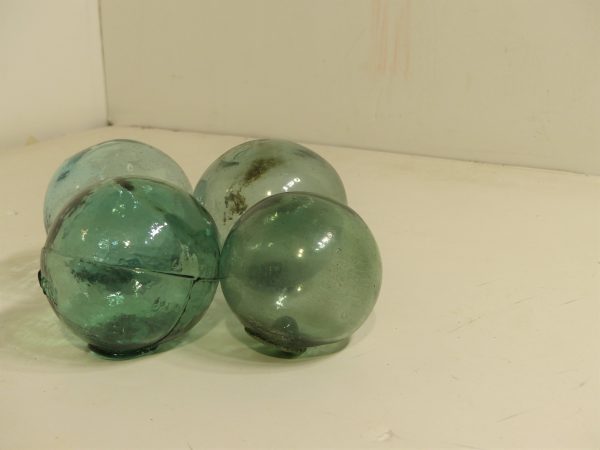Collections Catch of the Week – Glass Floats

The Collections Catch of the Week is a recurring blog series created by our summer Collections Assistants to showcase some of the fascinating finds from the our collection that have been uncovered during their work on our Collections Rationalization Project. In 2019, this series will be coming to you from our current Collections Assistant, Enid. Be sure to check back weekly to see more about the many fantastic artifacts from behind the scenes in our collections storage!
To kick off the 2019 edition of the Collections Catch of the Week, we’ve salvaged our collections catch from the shore; they are several glass spheres, greenish-blue in hue, ranging from 8-10cm in diameter. Turns out, these are Japanese glass floats, absent of netting, which is usually found covering such artifacts. Glass floats were a common fishing device used by fishermen in Japan to help keep fishing nets and longlines afloat. They come in a variety of colours, ranging from the more common brown, amber, and clear ones we have in our collections, to the rarer greens and purples. The jade-colouring of Japanese glass floats is attributed to its material, which is said to be recycled sake bottles.
Christopher Faye, a Norwegian merchant, is largely credited with the invention of the commercial glass float. These aesthetic orbs became a quintessential device in the European fishing industry in the mid-1800s. Eastern countries such as Japan began using glass floats around 1910. Nowadays, glass floats are a popular shoreside collectible, as many have been lost to the oceans, showing up on beaches after 7-10 years drifting afloat.